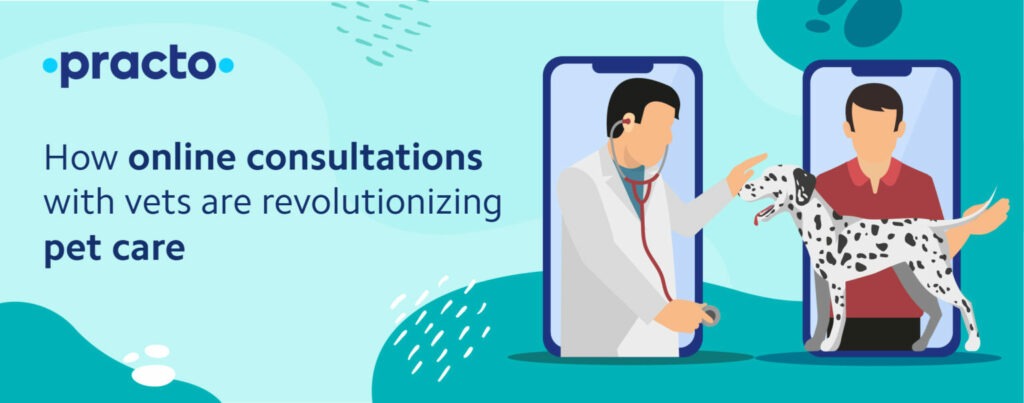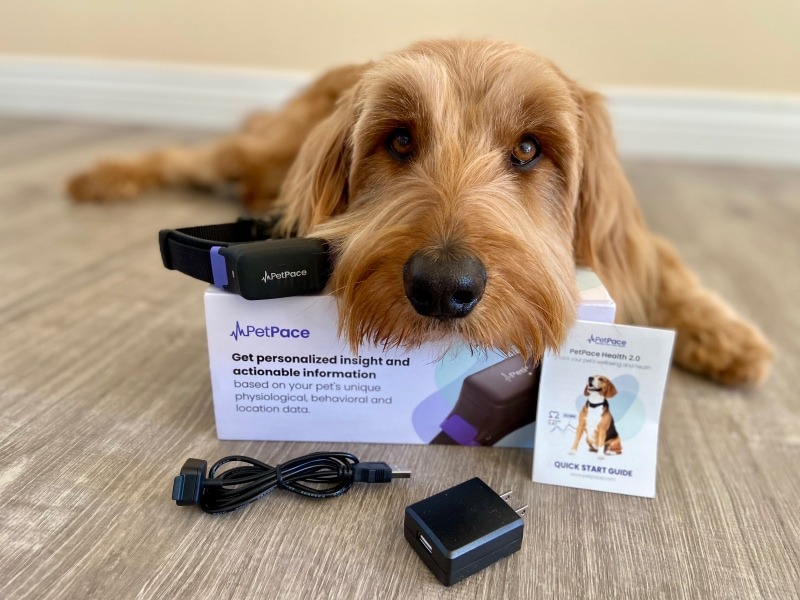The global pet care market is booming, driven by a profound shift in how people view and care for their pets. Pets are increasingly considered family members, leading to higher investments in their health and well-being. This trend is reflected in the market’s impressive growth, valued at USD 304.4 billion in 2023 and projected to grow at a CAGR of 6.8%, reaching USD 545.7 billion by 2032. This surge is also fueled by the rising demand for premium pet products, advanced healthcare solutions, and innovative digital health platforms that cater to the evolving needs of pet owners.
Preventive healthcare for pets has become an essential component of this market. Much like in human healthcare, preventive measures in pet care—such as regular veterinary check-ups, vaccinations, balanced diets, and wellness products—are crucial in detecting and addressing potential health issues early on.
This proactive approach helps pets lead healthier and longer lives and offers significant cost savings by avoiding expensive treatments for advanced health problems.
Understanding the trends and consumer behaviors in preventive pet healthcare is vital for industry stakeholders—from veterinarians and pet product manufacturers to digital health platform developers—to cater to pet owners’ evolving needs.
The Growing Demand for Preventive Healthcare in the Pet Industry
Current Market Trends and Statistics on Preventive Healthcare for Pets
The pet care market is experiencing a notable shift toward preventive healthcare, with pet owners increasingly investing in products and services that maintain and enhance their pets’ health.
A significant portion of this billion-dollar pet industry is now dedicated to preventive health measures such as regular veterinary visits, vaccinations, and health monitoring technologies.
This trend is reflected in the growing popularity of premium pet food, supplements, and wellness products designed to prevent health issues before they arise.
Key Drivers Behind the Increasing Demand
Pet Humanization
Pet humanization is a primary driver of the increased demand for preventive healthcare in the pet industry. Pet owners are treating their pets more like family members, leading to higher expenditures on health and wellness products. This trend is especially pronounced in Western countries, where pet owners are willing to invest in premium products and services that promote their pets’ long-term health.
Rising Awareness of Pet Health and Wellness
Awareness of pet health and wellness is on the rise globally. Pet owners are becoming more knowledgeable about the importance of preventive care, driven by educational campaigns from veterinarians, pet product companies, and animal health organizations. This increased awareness has led to a surge in demand for products such as specialized diets, health supplements, and routine veterinary care, which are crucial for maintaining pet health and preventing diseases.
Increase in Pet Ownership Globally
The rise in pet ownership worldwide is another significant factor driving the demand for preventive healthcare solutions. Urbanization, changing lifestyles, and the companionship offered by pets have increased pet adoption rates. This growth in the pet population has, in turn, boosted the market for preventive healthcare products and services as new pet owners seek to ensure the well-being of their pets from the start.
Regional Insights: Differences Between Western Countries and Asia
Western Countries
The pet care market in Western countries is well-established, strongly emphasizing preventive healthcare. High disposable incomes, advanced veterinary services, and a cultural inclination toward pet pampering drive the demand for high-quality preventive care products. For instance, the North American pet care market is highly advanced, with a significant focus on premiumization and high spending on pet health and wellness.
Our most recent study, “Overcoming Vet Challenges: Unveiling Opportunities for Animal Health Brands” in the UK, highlighted that 78% of pet owners consider preventive healthcare essential for their pets.
The study found that regular veterinary visits and preventive treatments are prioritized, with pet owners willing to spend more on high-quality care to ensure their pets remain healthy and happy. This trend underscores the deep bond between pets and their owners in Western countries and the lengths owners will go to provide the best care possible.
Asia
In contrast, the pet care market in Asia is rapidly growing but still developing in many regions. Countries like China, Japan, and India are witnessing a surge in pet ownership and an increasing awareness of pet health. However, cultural differences and varying economic conditions mean that the market for preventive healthcare products is not as mature as in Western countries. Nevertheless, the growing middle class and increased urbanization drive demand for better pet care products and services, leading to significant growth opportunities in the region.
The Role of Digital Health Platforms for Pets
Digital health platforms are revolutionizing the pet healthcare industry by offering innovative solutions that enhance preventive care. These platforms leverage technology to provide accessible, real-time health monitoring, diagnostic services, and communication between pet owners and veterinarians. By integrating digital tools into pet healthcare, these platforms help in the early detection of health issues, continuous monitoring of pets’ well-being, and efficient management of preventive care routines.
Types of Digital Health Solutions Available
- Telemedicine: Telemedicine allows pet owners to consult with veterinarians remotely, reducing the need for physical visits. This is especially useful for routine check-ups, follow-ups, and non-emergency consultations. Examples include services like Vetster and PawSquad.
- Health Monitoring Apps: These apps track various health parameters such as activity levels, diet, and medical records. They provide valuable insights into pet health trends and alert owners to irregularities. Apps like PetDesk and Whistle are popular in this category.
- Wearable Devices: Smart collars and fitness trackers monitor pets’ real-time activity, location, and health metrics. Devices like the FitBark and PetPace collars offer comprehensive health tracking features.
Benefits of Digital Health Platforms for Pet Owners and Veterinarians
- For Pet Owners:
- Convenience: Access to veterinary services and health monitoring from home.
- Cost-Effective: Reduces the need for frequent in-person vet visits, saving on transportation and consultation costs.
- Proactive Care: Early detection of health issues through continuous monitoring helps in timely intervention.
- Comprehensive Care: Centralized health records and personalized health recommendations improve overall care quality.
- For Veterinarians:
- Efficiency: Streamlines routine consultations and follow-ups, allowing vets to focus on more critical cases.
- Data-Driven Insights: Access to continuous health data aids in better diagnosis and treatment planning.
- Enhanced Client Relationships: Regular communication and proactive care recommendations build trust and satisfaction among pet owners.
Case Studies of Successful Digital Health Platforms
Practo (India)

Image Credit: Practo
Background
Practo is one of the leading digital health platforms in India, established to bridge the gap between patients and healthcare providers. It offers a range of services including online consultations, appointment bookings, health records management, and a digital health marketplace.
Strategy/Approach
- Service Integration: Practo integrates various health services into a single platform, offering telemedicine, in-person appointments, diagnostic tests, and e-pharmacy services.
- User-Friendly Interface: The platform is designed to be user-friendly, allowing patients to easily book appointments, consult doctors online, and access their health records.
- Partnerships: Practo has partnered with numerous hospitals, clinics, and pharmacies across India to provide a comprehensive healthcare solution.
Outcomes/Results
- Widespread Adoption: Practo has seen widespread adoption with millions of users across India. It has significantly reduced the cost of healthcare delivery by providing services at lower prices compared to traditional healthcare facilities.
- Enhanced Accessibility: The platform has made healthcare more accessible to people in remote areas, improving overall health outcomes and patient satisfaction.
PetPace (United States)

Image Credit: PetPace
Background
PetPace, a health monitoring platform for pets, uses advanced wearable technology to track vital signs and health metrics in real time. It aims to provide comprehensive health monitoring solutions for pets, focusing on early detection of health issues.
Strategy/Approach:
- Wearable Technology: PetPace uses a smart collar equipped with sensors to monitor pets’ vital signs such as temperature, pulse, respiration, and activity levels.
- Real-Time Alerts: The platform provides real-time alerts to pet owners and veterinarians if any health parameters fall outside normal ranges, enabling timely intervention.
- Data Analytics: PetPace employs data analytics to track health trends and generate detailed health reports, which can be accessed via a mobile app or web portal.
Outcomes/Results:
- Improved Health Monitoring: PetPace has enhanced the ability of pet owners and veterinarians to monitor and manage pet health proactively, leading to early detection and treatment of potential health issues.
- User Trust and Satisfaction: The platform has built trust among users due to its reliability and accuracy in health monitoring, contributing to its success and widespread use in the US.
Regional Insights: Adoption Rates and Challenges in Western Countries and Asia
Western Countries:
High Adoption Rates: Digital health platforms are widely adopted in countries like the U.S., Canada, and the U.K., driven by high disposable incomes, advanced veterinary infrastructure, and a strong culture of pet humanization.
Challenges: Despite high adoption, challenges include data privacy concerns, user education on new technologies, and ensuring accessibility for all socio-economic groups.
Asia:
Growing Adoption: Countries like China, Japan, and India are witnessing a surge in adopting digital health platforms for pets, fueled by increasing pet ownership and rising awareness of pet health.
Challenges: Economic disparities, varying levels of technological infrastructure, and cultural differences pose challenges to widespread adoption. In many regions, the focus is still on basic pet care rather than advanced preventive solutions.
Implications for Pet Owners
How Preventive Healthcare Solutions Benefit Pet Owners
- Cost Savings on Medical Bills
Preventive healthcare solutions can lead to significant cost savings for pet owners by reducing the need for expensive treatments for advanced health issues. Regular check-ups, vaccinations, and early detection of potential health problems can prevent the development of severe conditions that require costly interventions. For example, a simple dental cleaning can prevent periodontal disease, which, if left untreated, can lead to more serious health problems requiring extensive veterinary care.
- Enhanced Quality of Life for Pets
Preventive healthcare measures ensure that pets maintain optimal health throughout their lives. Regular health monitoring, a balanced diet, and timely vaccinations contribute to pets’ overall well-being. Healthy pets are more active, have better immune responses, and enjoy a higher quality of life. For instance, wearable devices like PetPace collars help early detection of health issues, allowing for prompt treatment and enhancing the pet’s quality of life.
- Peace of Mind for Pet Owners
Knowing that their pets are receiving the best preventive care provides peace of mind. Digital health platforms that offer continuous health monitoring and telemedicine services allow pet owners to stay informed about their pets’ health status and seek professional advice whenever necessary. This reassurance is invaluable, especially for pet owners who view their pets as family members.
- Educational Resources and Support for Pet Owners
Preventive healthcare solutions often come with educational resources and support systems for pet owners. Many digital health platforms provide access to information about pet health, nutrition, and preventive care practices. Platforms like Practo and Vetster offer resources and guidance to help pet owners make informed decisions about their pets’ health. This education empowers pet owners to maintain their pets’ health proactively.
Implications for Industry Stakeholders
Opportunities for Veterinarians and Veterinary Clinics
Enhanced Service Offerings
- Telemedicine and Remote Consultations: Veterinarians can expand their service offerings by incorporating telemedicine, allowing for remote consultations and follow-ups. This is particularly beneficial for routine check-ups and non-emergency situations, improving accessibility for pet owners who may find it challenging to visit clinics frequently.
- Health Monitoring and Data Analytics: Utilizing digital health platforms that offer continuous health monitoring and data analytics can help veterinarians provide more personalized care. Wearable devices like PetPace collars enable vets to monitor patients’ vital signs remotely and intervene promptly when necessary.
Increased Client Engagement
- Proactive Health Management: Veterinarians can foster stronger relationships with pet owners by engaging clients in proactive health management. Educational resources and regular health updates through digital platforms keep pet owners informed and involved in their pets’ health, leading to higher client satisfaction and retention.
Market Opportunities for Pet Product Manufacturers and Digital Health Companies
Growing Demand for Premium Products
- Nutritional and Wellness Products: There is a growing demand for premium pet food, supplements, and wellness products designed for preventive health. Manufacturers can capitalize on this trend by developing and marketing products that cater to health-conscious pet owners.
- Technological Innovations: Digital health companies have opportunities to develop and market advanced health monitoring devices, telemedicine platforms, and health management apps. Integrating AI and machine learning into these products can enhance their appeal and effectiveness.
Expansion into Emerging Markets
- Asia’s Growing Market: The pet care market in Asia is expanding rapidly, driven by increasing pet ownership and awareness of pet health. Manufacturers and digital health companies can tap into this growth by tailoring products and services to meet the unique needs and preferences of Asian pet owners.
Case Study: Mars Petcare’s Expansion into China
Image Credit: Mars Petcare
Background
Us-based Mars Petcare is a leading provider of pet nutrition and health products, with a significant presence in the global pet care market. The division includes well-known brands such as Pedigree, Whiskas, Royal Canin, and IAMS. The brand has been expanding its presence in the Asian market, particularly in China. As pet ownership continues to grow rapidly in China, driven by urbanization and changing lifestyles, Mars saw an opportunity to cater to the rising demand for high-quality pet care products and services.
Strategy/Approach
Market Research and Entry Strategy
- Understanding Local Preferences: Mars conducted extensive market research to understand the preferences and behaviors of Chinese pet owners. This included studying dietary habits, health concerns, and the types of products that were in demand.
- Tailored Products: Based on their findings, Mars developed products that catered specifically to the needs of Chinese pets. For instance, they introduced pet food formulas that addressed common health issues among pets in China, such as digestive health and skin conditions.
- Local Partnerships: Mars partnered with local companies and distributors to ensure their products were widely available nationwide. This included collaborations with e-commerce giants like Alibaba and JD.com, popular platforms among Chinese consumers.
Marketing and Brand Positioning
- Localized Marketing Campaigns: Mars launched localized marketing campaigns to resonate with Chinese pet owners. They utilized popular social media platforms like WeChat and Weibo to reach their target audience and build brand awareness.
- Educational Initiatives: To educate pet owners about the importance of preventive healthcare, Mars initiated various educational programs and workshops. These initiatives aimed to raise awareness about proper nutrition, regular veterinary check-ups, and overall pet wellness.
Outcomes/Results
Market Penetration and Growth
- Increased Market Share: Since its expansion, Mars Petcare has significantly increased its market share in China. Its tailored approach and commitment to understanding local needs have helped it establish a strong presence in the competitive pet care market.
- Enhanced Brand Recognition: Through effective marketing and partnerships, Mars has become a well-recognized and trusted brand among Chinese pet owners. Their educational initiatives have also contributed to a more informed and health-conscious pet owner community.
- Revenue Growth: Mars Petcare’s expansion into China has resulted in substantial revenue growth. The company continues to invest in the market, leveraging its success to further strengthen its position and introduce new products and services.
By leveraging their global expertise and adapting to local needs, Mars Petcare has successfully expanded into the Chinese market, setting a precedent for other companies looking to enter emerging Asian markets. This case study highlights the importance of market research, localized strategies, and partnerships in achieving successful market penetration and growth.
Importance of Partnerships and Collaborations in the Pet Healthcare Ecosystem
Collaborative Innovation
- Joint Ventures and Partnerships: Collaborations between veterinary clinics, pet product manufacturers, and digital health companies can lead to innovative solutions and comprehensive care packages. For example, partnerships between wearable device manufacturers and veterinary clinics can enhance health monitoring and preventive care services.
- Educational Initiatives: Partnering with educational institutions and animal health organizations can help spread awareness and educate pet owners about the importance of preventive healthcare. These collaborations can also support the research and development of new preventive health products and services.
Integrated Health Solutions
- Seamless Integration of Services: Creating integrated health solutions that combine various aspects of preventive care—such as nutrition, health monitoring, and veterinary consultations—can provide a more holistic approach to pet healthcare. This integration can improve health outcomes and enhance the overall experience for pet owners.
Future Trends in Preventive Healthcare for Pets
Emerging Trends and Innovations in the Industry
Personalized Nutrition Plans
- Customization and Precision: Personalized nutrition plans for pets are becoming increasingly popular. These plans are tailored to the specific needs of individual pets based on factors such as age, breed, weight, health conditions, and lifestyle. Companies like Nom Nom and Ollie provide custom meal plans designed to meet each pet’s unique nutritional requirements.
- Data-Driven Diets: By analyzing data from health monitoring devices and veterinary records, these companies can create precise diet plans that help prevent health issues and promote overall well-being.
Advanced Health Monitoring Technologies
- Wearable Devices: The use of wearable devices like smart collars and fitness trackers for pets is rising. These devices monitor various health parameters, such as activity levels, heart rate, sleep patterns, and location. Examples include the FitBark and Whistle trackers, which provide real-time data to pet owners and veterinarians.
- Health Monitoring Apps: Mobile apps that sync with these wearable devices offer comprehensive health monitoring solutions. They allow pet owners to track their pets’ health metrics, set fitness goals, and receive alerts about potential health issues.
Integration of AI and Big Data in Pet Healthcare
- Predictive Analytics: AI and big data are being integrated into pet healthcare to predict and prevent health issues before they arise. AI algorithms can identify patterns and provide early warnings about potential health problems by analyzing large datasets from health monitoring devices and veterinary records.
- Personalized Care: AI-driven platforms can offer personalized care recommendations based on the pet’s health data. These recommendations can include dietary adjustments, exercise routines, and preventive measures to maintain optimal health. Companies like Pet Insight Project are leading the way in utilizing AI for pet health analytics.
Predictions for the Future Market Landscape
- Growth in Preventive Healthcare Market: The market for preventive healthcare solutions is expected to grow significantly in the coming years. Increased awareness about pet health, advancements in technology, and the rising trend of pet humanization are key drivers of this growth.
- Expansion of Digital Health Platforms: Digital health platforms offering telemedicine, health monitoring, and personalized care will likely become more prevalent. These platforms will play a crucial role in making preventive healthcare accessible and affordable for pet owners globally.
- Innovations in Veterinary Care: The veterinary care industry will continue to evolve by integrating advanced technologies. Innovations such as AI-driven diagnostic tools, telemedicine, and personalized treatment plans will enhance the care provided to pets.
Regional Insights: Expected Developments in Western Countries and Asia
Western Countries
- Advanced Adoption of Technologies: Western countries, particularly the United States and Europe, are expected to lead in the adoption of advanced preventive healthcare technologies. High disposable incomes, a strong culture of pet pampering, and access to cutting-edge veterinary services will drive this trend.
- Focus on Wellness and Prevention: There will be a continued focus on wellness and preventive care, with pet owners investing in premium products and services to ensure their pets’ health and happiness. Companies in these regions will likely develop more sophisticated and integrated health solutions.
Asia
- Rapid Market Growth: The pet healthcare market in Asia is poised for rapid growth. Increasing pet ownership, rising awareness of pet health, and urbanization are key factors contributing to this expansion.
- Challenges and Opportunities: While the market in Asia is growing, challenges such as economic disparities and varying levels of technological infrastructure need to be addressed. However, there are significant opportunities for companies that can tailor their products and services to meet the unique needs of Asian pet owners. Innovations in affordable and accessible preventive healthcare solutions will be crucial for market penetration.
The future of preventive healthcare for pets looks promising, with continuous innovations and growing awareness among pet owners driving the market forward. By leveraging advanced technologies and focusing on personalized care, the industry can ensure that pets lead healthier and happier lives.
Final Thoughts on the Importance of Preventive Healthcare for Pets
Preventive healthcare for pets is essential for ensuring their long-term health and well-being. Pet owners can help their pets lead healthier and happier lives by focusing on prevention rather than treatment. Regular veterinary check-ups, vaccinations, proper nutrition, and health monitoring are critical preventive care components. These measures detect potential health issues early and prevent them from developing into more severe conditions that require extensive and costly treatments.
Advancements in digital health platforms, personalized nutrition plans, and health monitoring technologies have made preventive healthcare more accessible and effective. The integration of AI and big data is revolutionizing the industry by providing personalized care recommendations and predictive analytics that enhance pet health management. As pet ownership continues to rise globally, the demand for these innovative preventive healthcare solutions will only grow.
What does this mean for Veterinarians and Pet Healthcare Brands?
For Veterinarians:
- Embrace Technology: Incorporate digital health platforms and wearable devices into your practice to provide continuous health monitoring and remote consultations. These tools can help in early detection of health issues and improve patient outcomes.
- Educate Pet Owners: Play a proactive role in educating pet owners about the importance of preventive healthcare. Provide resources and guidance on proper nutrition, routine check-ups, and vaccinations to help pet owners take better care of their pets.
- Offer Comprehensive Care Plans: Develop and offer comprehensive preventive care plans that include regular check-ups, vaccinations, dental care, and nutritional counseling. These plans can encourage pet owners to invest in their pets’ long-term health and well-being.
For Pet Healthcare Brands:
- Innovate and Expand: Continue to innovate by developing new products and services that address pet owners’ evolving needs. Invest in research and development to create advanced health monitoring devices, personalized nutrition plans, and AI-driven health analytics.
- Form Strategic Partnerships: Collaborate with veterinarians, technology providers, and other stakeholders in the pet healthcare ecosystem to create integrated solutions. Partnerships can enhance the effectiveness of preventive healthcare and provide comprehensive care options for pet owners.
- Promote Awareness and Accessibility: Launch educational campaigns to raise awareness about the benefits of preventive pet healthcare. Address economic disparities and regional differences in pet healthcare practices to ensure that your products and services are accessible to a wide range of pet owners.
By working together, veterinarians and pet healthcare brands can ensure that pets receive the best preventive care. This collaboration will lead to healthier and happier pets and create a more informed and proactive pet owner community.




